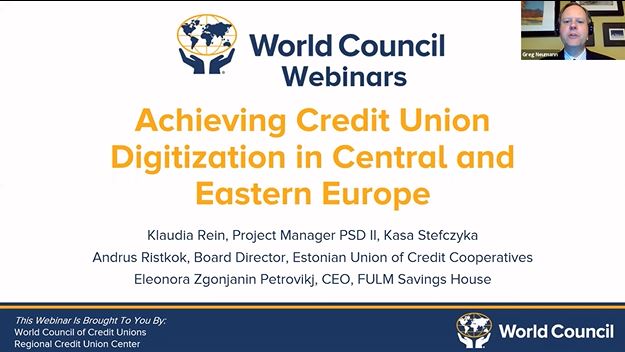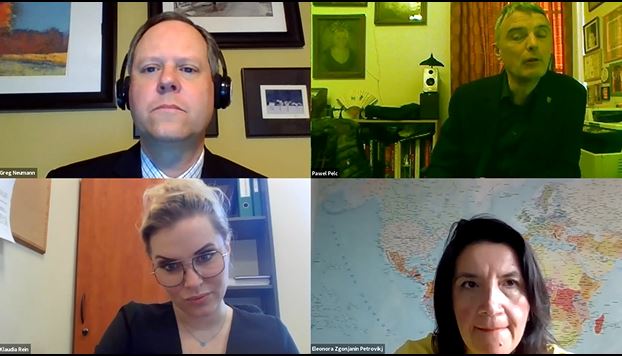Eastern European Credit Unions Share Digitization Success Stories on Webinar
2021-01-21Representatives of the credit union movements in Poland, Estonia and North Macedonia shared stories of their digital transformation on a January 21 webinar presented by World Council and the Eastern European Regional Credit Union Center.
Achieving Credit Union Digitization in Central and Eastern Europe focused on how both credit union systems and individual credit unions in the region have approached providing digital online and mobile services for their members.
Launching a shared platform
Andrus Ristkok, a Board Director and former CEO at the Estonian Union of Credit Cooperatives (EUCC), shared how his organization created Baltic Shared Services (BSS) Ltd.—a separate entity that integrated a digital back office system and payment engine with internet banking opportunities for financial institutions.
Founded in 2010, BSS Ltd. took four years to test before it launched the back office modules in 2014. The payment facility started a year later, with a mobile banking portal introduced in 2016. Just last year, the system was linked to Euro Banking Assocation (EBA) clearing over the Lithuanian Bank’s CENTROLINK.
According to Ristkok, the BSS system offers full functionality related to:
- Member data management.
- Accounts.
- Loans.
- Deposits.
- Payments.
- Credit union administration (employee roles, permissions, product descriptions, fees).
- Reports.
The system became possible despite only a small number of market participants, due to EUCC’s understanding of the innovation importance of strategic development. Ristkok also shared his views on current challenges and the importance of a flexible decision-making approach to realize the potential of credit unions.
Pandemic pushes Polish digitization forward
Klaudia Rein, project manager of the Implementation of the EU’s revised Payment Services Directive (PSD II) at Kasa Stefczyka, reported on how Poland’s largest credit union transitioned to online channels and its adaptation to pandemic conditions through IT solutions.
People in Poland are currently required to submit a written declaration, in-person at a branch location to obtain credit union membership. But with the COVID-19 crisis ushering in a new reality, Polish law was changed to offer more remote options. Beginning on July 1, 2021, people can join a credit union online by submitting an electronic declaration with customer identity verification.
Kasa Stefczyka is also implementing its so-called “Paperless Project”—allowing members to sign contracts on tablets in branches. According to Rein, this will help the credit union save money, provide more security for members and provide environmental benefits.
A digitization vision for small credit unions
Eleonora Zgonjanin Petrovikj, CEO at FULM Savings House in the Republican of North Macedonia, used her time to stress to attendees that smaller credit unions should not let their size stop them from providing digital services to their members.
Zgonjanin Petrovikj said credit unions need see digital transformation as an opportunity to help improve the living standards of members and the greater population through financial services. Among the key tasks she identified to accomplish this were:
- cooperation with IT solution providers;
- an analysis of customer needs; and
- the introduction of training and motivational component for employees.
But the most important task, according to Zgonjanin Petrovikj, is to ready credit union managers for the changes required by the transition to digital, because credit union leaders and senior managers will shape the mission and vision for the future.
“Digitalization is not only a necessary condition for the future success of credit unions, but also has significant benefits both for credit unions themselves and their customers,” said Zgonjanin Petrovikj.
You can view this webinar in its entirety, by visiting the World Council YouTube Channel.
Members of World Council of Credit Unions' Credit for Agriculture Producers (CAP) Project in Ukraine contributed to this blog post.


